#GoogleAI
Text
Google Is Setting A New Standard In The AI World. Meet Gemini Advanced .
#GeminiAdvance#Bard#GoogleAI#AI#technology#innovation#artificialintelligence#Google#machinelearning#creativeAI#digitalart#creativecoding#coding#programming#GoogleResearch#futuretech#technews#newtechnology#techinnovation#creativeprocess#Digital#BigData#DeepLearning#Algorithm
2 notes
·
View notes
Photo
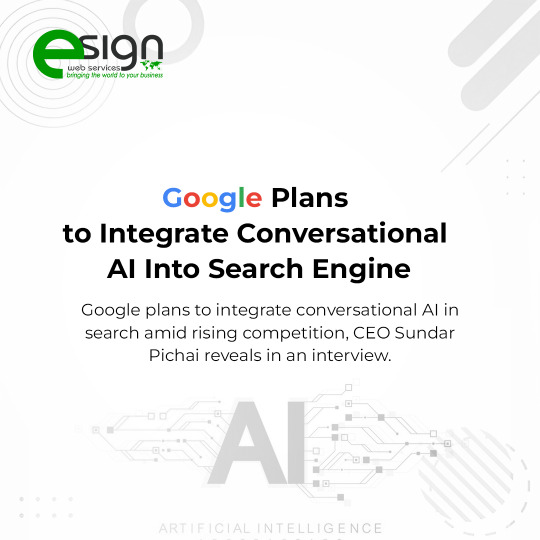
Google plans to integrate conversational AI in search amid rising competition, CEO Sundar Pichai reveals in an interview.
For more interesting facts follow @esignwebservices now.
#Google#conversationalAI#AIpowered#AIsearch#searchengine#googleupdate#technology#trendingnow#technews#googleai#digitalmarketing#digitalmarketingagency#esignwebservices
4 notes
·
View notes
Text
What is google Algorithm Update
A Google algorithm update refers to changes made by Google to its search algorithm, which is the complex system that Google uses to determine the ranking of web pages in search results. The purpose of these updates is to improve the accuracy, relevance, and usefulness of search results for users.
6 notes
·
View notes
Text
google-Bard vs ChatGpt
أعلنت شركة google خبر هام عن انطلاق google-bard أقوي برنامج الذكاء الاصطناعي
حيث أطلقت الشركة لكل مستخدمي جوجل وهي تطبيق الذكاء الاصطناعي "bard" والذي سينافس تطبيق ChatGpt
بقوة وسيصبح متاحا في الأسابيع القليلة القادمة دعونا نتعرف سويا أكثر عن تطبيق "bard"
ودور الذكاء الاصطناعي بالنسبة google.
bard
Bard
https://www.team90th.com/2023/02/google-bard-chatgpt.html
#Bard#BardAI#GoogleAI#GoogleBard#جوجل_بارد#bard#الذكاء_الاصطناعي#gooogle_brad#chatgpt#ما_هو_brad#منافسة_بين_brad_gpt#برنامج_محادثة_google_brad#تعلم_google_brad#مميزات_google_brad#أهم_مميزات_برنامج_جوجل_براد#جوجل_براد#فريق_التسعينات#team90th#خبر_سار_لمستخدمين_جوجل
4 notes
·
View notes
Link
Get ready for a revolution in AI! Google has unveiled its latest creation, the Gemini 1.5 Pro, a groundbreaking AI model boasting a significantly larger context window than its predecessor. This advancement unlocks a new level of understanding and responsiveness, paving the way for exciting possibilities in human-AI interaction. Understanding the Context Window: The Key to Smarter AI Imagine a conversation where you can reference details mentioned hours ago, or seamlessly switch between topics without losing the thread. That's the power of a large context window in AI. Essentially, the context window determines the amount of information an AI can consider at once. This information can be text, code, or even audio (as we'll see later). The larger the context window, the better the AI can understand complex relationships and nuances within the information it's processing. Google Unveils Gemini 1.5 Pro Gemini 1.5 Pro: A Quantum Leap in Contextual Understanding The standard version of Gemini 1.5 Pro boasts a massive 128,000 token window. Compared to the 32,000 token window of its predecessor, Gemini 1.0, this represents a significant leap forward. For those unfamiliar with the term "token," it can be a word, part of a word, or even a syllable. But Google doesn't stop there. A limited version of Gemini 1.5 Pro is available with an astronomical one million token window. This allows the model to process information equivalent to roughly 700,000 words, or about ten full-length books! Imagine the possibilities! This "super brain" can analyze vast amounts of data, identify subtle connections, and generate insightful responses that would be beyond the reach of traditional AI models. Beyond Context: New Features Empower Developers The impressive context window is just the tip of the iceberg. Gemini 1.5 Pro comes packed with exciting new features designed to empower developers and unlock even greater potential: Native Audio and Speech Support: Gemini 1.5 Pro can now understand and respond to spoken language. This opens doors for applications like voice search, real-time translation, and intelligent virtual assistants. Simplified File Management: The new File API streamlines how developers handle files within the model. This improves efficiency and simplifies the development process. Granular Control: System instructions and JSON mode offer developers more control over how Gemini 1.5 Pro functions. This allows them to tailor the model's behavior to specific tasks and applications. Multimodal Capabilities: The model's ability to analyze not just text but also images and videos makes it a truly versatile tool. This paves the way for innovative applications in areas like visual search, content moderation, and even autonomous vehicles. Global Accessibility: Gemini 1.5 Pro Reaches Over 180 Countries The launch of Gemini 1.5 Pro in over 180 countries, including India, marks a significant step towards democratizing AI technology. This powerful model, with its unparalleled context window and suite of new features, is no longer limited to a select few. Developers and users worldwide can now explore the potential of AI and create innovative solutions that address local and global challenges. Google's AI and Hardware Advancements: A Multi-faceted Approach Google's commitment to AI advancement extends beyond the impressive capabilities of Gemini 1.5 Pro. Here are some additional highlights from their announcement: Axion Chip Unveiled: Google has entered the ARM-based CPU market with the Axion chip. This chip promises significant improvements, boasting "up to 50% better performance and up to 60% better energy efficiency" compared to current x86-based options. This advancement could have a major impact on the efficiency and scalability of AI applications. AI Hypercomputer Gets a Boost: Google's AI Hypercomputer architecture receives an upgrade with A3 Mega VMs powered by NVIDIA H100 Tensor Core GPUs. This translates to higher performance for large-scale training and research in the field of AI. Cloud TPU v5p Now Generally Available: Cloud TPU v5p, Google's custom-designed Tensor Processing Units specifically designed for AI workloads, are now generally available. This will provide developers and researchers with easier access to the powerful processing capabilities needed for cutting-edge AI projects. FAQs Q: What is a context window in AI? A: A context window refers to the amount of information an AI model can consider at once. A larger context window allows the AI to understand complex relationships and nuances within the information it's processing. Q: How much bigger is the context window in Gemini 1.5 Pro compared to its predecessor? A: The standard version of Gemini 1.5 Pro boasts a 128,000 token window, which is four times larger than the 32,000 token window of Gemini 1.0. Q: Can Gemini 1.5 Pro understand spoken language? A: Yes, Gemini 1.5 Pro features native audio and speech support, allowing it to understand and respond to spoken language. Q: Is Gemini 1.5 Pro available in my country? A: The launch of Gemini 1.5 Pro in over 180 countries marks a significant step towards democratizing AI technology. It's likely available in your country, but you can confirm on Google's official website.
#A3MegaVMs#AIHypercomputer#AIModelCapabilities#AxionChip#ContextWindow#FileAPI#Gemini1.5Pro#GlobalAIAccessibility#googleai#GoogleUnveilsGemini1.5Pro#JSONMode#LargeLanguageModel#MultimodalCapabilities#NativeAudioSupport#SystemInstructions
0 notes
Text
Gen AI Review-Transforming Text-Image and Music Production
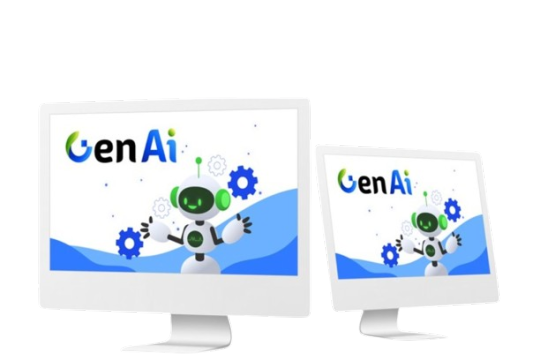
Welcome to my Gen AI Review Post. In this genuine user based review of Gen AI, we will delve into its features, upgrades, demo, pricing, bonuses, and its potential benefits, along with my personal opinion.
The Google Cutting-Edge Generative AI Powered App represents a groundbreaking innovation in content creation, utilizing advanced AI technology to seamlessly generate text, images, music, audio, and videos.
With Google is Next Generation AI Model at its core, this app is poised to revolutionize the creative process and unlock new avenues for content generation.
Picture effortlessly conjuring up high quality image mockups while describing a product, or effortless crafting catchy marketing slogans with Gen AI. Even when faced with the daunting task of creating a presentation, Gen AI can step in to provide a compelling script, igniting your creative spark.
Its user friendly interface ensures accessibility to a wide range of user, from seasoned content creators to students aiming to enhance their creativity. However, it is essential to note that while Gen AI is a game changer, it is still in the process of evolution.
Now, let us take a closer look at it is functionalities, potential benefits and some crucial factors to consider before fully embracing the realm of AI powered content creation.
Read More
#GenAI#GenAIbonus#GenAIfeatures#GenAIoto#GenAIoverview#GenAIReview#GenAIscam#GoogleAi#GoogleGenAi#GoogleGenerativeAi#howtoGenAIworks#whatisGenAI
0 notes
Text
Effective-Use-Of-Premium-Writer
Effective-Use-Of-Premium-Writer Mastering The Use of a Premium Writer As a Premium Writer, I am here to assist you in creating high-quality, engaging written content. Below are some methods to use a Premium Writer effectively, along with tips for crafting ideal prompts for impressive articles. How to Use Premium Writer Effectively 1. Specific Instructions: For the best results, be as specific as…
View On WordPress
#ai feed gpt4 threads youtube games nvda twz voice CopyrightFree#AI Web Summarizer#แชท gpt#blind#Claude#computer#Cx File Explorer#GoogleAI#phone#Secure"#The best programmer#tool#AI#Android#Bard#ChatGPT#google
0 notes
Link
Ever hear so-called SEO gurus rant about Google's 'hatred' for AI content? 🙄 Worse yet, are the herds blindly following without a peek at the facts? 🐑 Wake up, digital world! Google's stance on AI-generated content is nuanced and all about quality and user experience. 🌟 The evolution from past skepticism to present acceptance is clear. Dive into our latest post to discover how Google actually evaluates AI content—because, let's face it, informed decisions beat echo chamber parroting any day. #SEO #GoogleAI #ContentQuality #BeInformedNotInfluenced
#SEO#GoogleAI#AIContent#ContentCreation#DigitalMarketing#UserExperience#QualityContent#SEOStrategy#AIinSEO#GoogleGuidelines#ContentMarketing#SearchEngineOptimization
0 notes
Text
Zero ETL-safe BigQuery-Salesforce Data Cloud integration
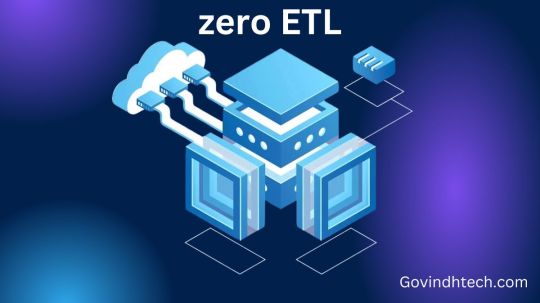
Zero ETL on Google cloud and Salesforce
The general availability of bidirectional data sharing between BigQuery and Salesforce Data Cloud excites us. Customers will be able to easily enhance their data use cases by safely merging data from several platforms, all without having to pay extra for complicated ETL (Extract, Transform, Load) pipelines and data infrastructure development.
More touchpoints and devices are available to provide instantaneous customer experiences, making prompt customer service more important than ever. However, as more data is generated, collected, and dispersed across SaaS apps and analytics platforms, it’s becoming harder
A partnership between Google Cloud and Salesforce was announced last year. According to the partnership, customers can easily combine data from both Salesforce Data Cloud and BigQuery, and can take advantage of the combined power of BigQuery and Vertex AI solutions to unlock and enrich new analytics and AI/ML scenarios.
They are making these features generally available today, allowing joint Google Cloud and Salesforce customers to safely access their data across various platforms and clouds. Consumers won’t need to set up or maintain infrastructure in order to access their Salesforce Data Cloud in BigQuery. They can also utilize their Google Cloud data to enhance Salesforce Customer 360 and other apps.
Customers of Salesforce and Google Cloud gain from these announcements in the following ways:
A single pane of glass and serverless, cross-platform data access requiring no ETL
Regulated and safe two-way access to their BigQuery and Salesforce Data Cloud data in almost real-time, without requiring the creation of data pipelines and infrastructure.
Enhance Salesforce Customer 360 and Salesforce Data Cloud with their Google Cloud data. Additionally, the capacity to enhance client data with minimal data movement by combining it with other pertinent public datasets.
utilizing unique Vertex AI and Cloud AI services for churn modeling, predictive analytics, and returning to customer campaigns via the integration of Vertex AI and Einstein Copilot Studio.
BigQuery Omni and Analytics Hub allow customers to view their data holistically across the Salesforce and Google platforms, spanning cloud boundaries. With the help of this integration, data scientists, marketing analysts, and other data and business users can now combine data from the Google and Salesforce platforms to conduct AI/ML pipelines, analyze data, and gain insights in a self-service manner without the assistance of infrastructure or data engineering teams.
Customers can concentrate on analytics and insights because this integration is completely managed and governed, and it spares them from a number of significant business difficulties that often arise when integrating important enterprise systems. These innovations uphold the data governance and access policies that administrators have established. Access to datasets is restricted to those that have been expressly shared, and only those with permission can exchange and examine the information. Relevant data is pre-filtered from Salesforce Data Cloud to BigQuery with minimal copying, lowering egress costs and data engineering overhead when data is spread across multiple clouds and platforms.
Simple and safe access from Google Cloud to Salesforce Data Cloud
Consumers want to be able to access and integrate their loyalty and point-of-sale data from Google analytics platforms with their marketing, commerce, and service data from Salesforce Data Cloud to gain actionable insights about their customer behavior, such as likelihood to buy, cross-sell/upsell recommendations, and the ability to run highly customized promotional campaigns. Additionally, they wish to use unique Google AI services to create machine learning models for training and predictions on top of combined Salesforce and Google Cloud data. This will enable use cases like price elasticity, market-mix modeling, churn modeling, customer funnel analysis, and A/B test experimentation.
Customers can now easily access their Salesforce Data Cloud data with the launch of unique BigQuery cross-cloud and data sharing features. They have access to all the pertinent data required to run powerful ad campaigns and conduct cross-platform analytics securely with other Google products. Administrators of Salesforce Data Cloud can quickly and easily share data with the appropriate BigQuery users or groups. Through the Analytics Hub UI, BigQuery users can effortlessly subscribe to shared datasets.
With this platform integration, information can be shared in multiple ways:
You can use a single cross-cloud join of your Salesforce Data Cloud and Google Cloud datasets for smaller datasets and ad hoc access, such as to identify the store with the highest sales last year, with little data movement or duplication.
You can use cross-cloud materialized views to access larger data sets that power your executive update, weekly business review, or marketing campaign dashboards. These views are automatically and incrementally updated, bringing in new data only on a periodic basis.
Add Google Cloud-stored data to Salesforce Customer 360
They also hear from customers, particularly retailers, who want to use the rich features of Salesforce Data Cloud to deliver personalized messaging, create a more comprehensive customer 360-degree profile, and access and combine behavioral data from their websites and mobile apps that was collected by Google Analytics with their own data. Breaking down data silos and providing customers with seamless real-time access to Google Analytics data within Salesforce Data Cloud to create more detailed customer profiles and personalized experiences is now easier than ever.
Customers of Salesforce Data Cloud can connect to their Google Cloud account with ease using point-and-click navigation, choose pertinent BigQuery datasets, and make them available as External Data Lake Objects, enabling real-time data access. After becoming Data Lake Objects, they function as native Data Cloud objects, enhancing Customer 360 data models and providing insights to support Analytics and Personalization for Customer 360 models. The operational overhead and latency associated with the conventional ETL copy approach are eliminated by this integration, which also removes the need to create and maintain ETL pipelines for data integration.Imagec redit to Google cloud
Tearing down the barriers separating Google and Salesforce data
With the help of this platform integration between Google Cloud and Salesforce Data Cloud, businesses can now break down data silos, obtain actionable insights, and provide outstanding customer service. Through the power of Google AI, unified access, and seamless data sharing, this partnership is revolutionizing how businesses use their data to achieve success.
Customers can directly access data stored in Salesforce Data Cloud and combine it with data in Google Cloud to further enrich it for business insights and activation through the unique cross-cloud functionality of BigQuery Omni and the data sharing capabilities of Analytics Hub. Customers no longer need to build custom ETL or move data in order to perform unmatched cross-cloud analytics or view their data across clouds.
Read more on govindhtech.com
#zeroetl#bigquery#datacloud#googlecloud#vertexal#ai#copilotstudio#hub#googleai#google#technology#technews#news#govindhtech
0 notes
Text
Apple, Google Talks Could Bring Gemini AI to the iPhone
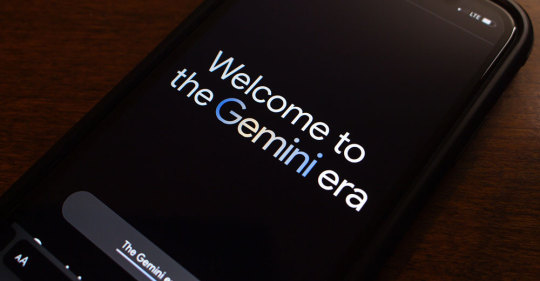
Apple and Google are huddling over a potential deal to bring the search king’s Gemini generative AI offerings to the iPhone. https://jpmellojr.blogspot.com/2024/03/apple-google-talks-could-bring-gemini.html
0 notes
Text
Gemini v/s ChatGPT
#NeedToKnow: Gemini v/s ChatGPT
What is Google Gemini?
Google has introduced a new AI called Gemini, and it’s making waves in the tech world. Gemini is an advanced AI created by Google.
What’s special about it is that it can understand not just text, but also images, videos, and even audio. It’s super versatile and can handle complex tasks in areas like math, physics, and even different programming languages.
What is OpenAI…

View On WordPress
0 notes
Text
#poll#naturallanguageprocessing#AI#chattingwithgemini#GoogleAI#machinelearning#peacejaway#AIethics#generativeLLM#googlegemini#@momentsofawareness#chatbot#languagemodeling#@PeaceJaway
0 notes
Link
Google's recent #TheAndroidShow episode unveiled exciting details about upcoming advancements in the Android universe. Discussions about the Mobile World Congress (MWC), the anticipated Android 15 update, and the intriguing Gemini Nano AI model generated a buzz. However, a bombshell announcement left Pixel 8 users scratching their heads – the absence of Gemini Nano, Google's most lightweight AI model, in the Pixel 8. This unexpected revelation sparked concerns about the future of on-device AI capabilities for Pixel 8 owners. Hardware Hurdles Hinder Gemini Nano Integration Terence Zhang, a Google developer relations engineer, shed light on the situation. He explained that "some hardware limitations" within the Pixel 8 prevent it from supporting Gemini Nano. This news may come as a disappointment to Pixel 8 enthusiasts eager to experience the potential benefits of on-device AI advancements. However, Zhang offered a ray of hope by hinting at the future integration of Gemini Nano into other high-end devices. This suggests Google's unwavering commitment to expanding the reach of its mobile-friendly large language model (LLM), Gemini Nano, with a focus on premium smartphones. A Tale of Two Pixels: The AI Divide Interestingly, while the Pixel 8 faces limitations with Gemini Nano, its pricier sibling, the Pixel 8 Pro, is confirmed to have the AI model on board. This creates a disparity in on-device AI capabilities between Google's latest flagship phones. Unfortunately, Google hasn't yet provided a detailed explanation for the hardware limitations hindering Gemini Nano's inclusion in the Pixel 8. The lack of transparency leaves Pixel 8 users with unanswered questions and a sense of potential missed opportunities. Potential Implications of Missing Out on Gemini Nano The absence of Gemini Nano in the Pixel 8 might have several implications: Limited On-Device AI Features: Without Gemini Nano, the Pixel 8 might rely more heavily on cloud-based AI for functionalities like enhanced voice recognition, image processing, and smart assistant capabilities. This could potentially lead to slower response times or a requirement for an internet connection for some features that might otherwise operate seamlessly on-device. Privacy Concerns: Increased reliance on cloud-based AI could raise privacy concerns for some users who might prefer on-device processing for more sensitive tasks. Missed Performance Optimization: Gemini Nano is designed for efficient on-device processing that can potentially improve smartphone performance by offloading tasks from the main processor. Without it, the Pixel 8 might experience slightly less efficient resource allocation for certain AI-powered features. However, it's important to note that Google hasn't yet revealed the specific functionalities Gemini Nano might have enabled on the Pixel 8. Therefore, the overall impact of its absence remains somewhat unclear. Looking Ahead: What Does This Mean for Pixel 8 Users? While the lack of Gemini Nano support in the Pixel 8 is a surprise, it doesn't necessarily signify a significant loss in overall functionality. Here's a breakdown to help Pixel 8 users navigate this situation: Pixel 8 Still Boasts Powerful AI: The Pixel 8 likely utilizes other AI models for core functionalities. It's important to wait for official information from Google regarding the on-device AI capabilities present in the Pixel 8. Potential Software Updates: Google might introduce software updates in the future that improve or expand AI functionalities on the Pixel 8, even without Gemini Nano. Focus on Other Strengths: The Pixel 8 likely boasts other strengths beyond AI, such as camera quality, display performance, or user interface design. Consider these aspects when evaluating the overall value proposition of the Pixel 8. FAQs Q: Why is the Pixel 8 not getting the Gemini Nano AI model? A: Google cites "hardware limitations" as the reason for excluding Gemini Nano from the Pixel 8. Specific details haven't been disclosed yet. Q: What are the potential benefits of Gemini Nano? A: Specific functionalities haven't been officially revealed by Google. However, Gemini Nano, being a mobile-friendly LLM, is likely designed for efficient on-device processing of tasks like voice recognition, and image processing, and potentially enhancing smart assistant capabilities. Q: Should I be worried about missing out on Gemini Nano with the Pixel 8? A: It's difficult to say definitively without knowing the specific features Gemini Nano would have enabled on the Pixel 8. Pixel 8 users will still have access to other AI models for core functionalities. It's advisable to wait for official information from Google regarding the on-device AI capabilities of the Pixel 8.
#ANDROID15#GeminiNano#googleai#hardwarelimitations#LargeLanguageModel#mobileLLM#ondeviceAI#Pixel8#Pixel8LosesOutonCuttingEdgeAI#Pixel8Pro#smartphoneAIcapabilities
0 notes
Text
Gemini Advanced: Google’s Latest AI Revolution and Pricing
0 notes
Text
Google Ups the Ante with Bard Advanced Brace Yourself for" Complex, Better Responses"
Hold onto your headdresses, folks, because the future of AI just got a whole lot more advanced. Google’s Bard, the language model formerly known for its emotional capabilities, is getting an important upgrade, Bard Advanced. Brace yourself for” complex, better responses.” That is how Google itself is pitching this coming-position interpretation.
So, what exactly does Bard Advanced bring to the…
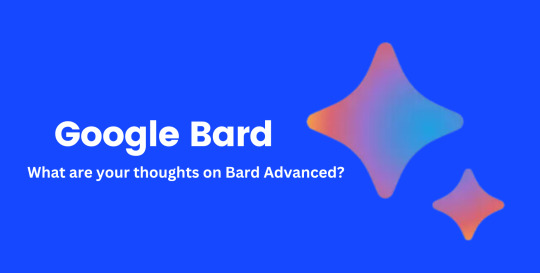
View On WordPress
0 notes